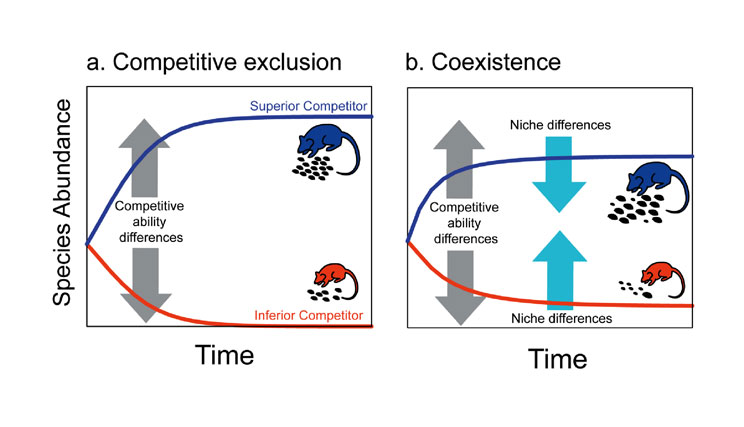Predators as "keystone" species
This week we've discussed how interactions among tropic levels affect community composition, specifically the role of top predators. Key examples that we discussed in class include Robert Paine's work in the rocky intertidal zone of the pacific US with predatory seastars, and Jane Lubchenco's work examining how a predator affects algal diversity in New England tide pools (1978).
A great resource by Nature.com entitled "Species with a Large Impact on Community Structure" (2010) includes key terminology with mouse-over definitions to help you learn vocabulary associated with this section.
Niche Differentiation & Competitive Exclusion
 |
| (Knowledge Project, Nature.com) |
The figure (right) is an example of a species' fundamental niche, relative to their temperature and food requirements. Learn more about how the environment affects species distribution here.
The figure (below) demonstrates the concept of competitive exclusion. Competitively dominant species population (blue) will, in time, exclude the less dominant species (red) in areas where their fundamental niche overlaps. In this example, the red species would then be confined to its realized niche. However, if they divide resource - e.g., large seeds for blue, small seeds for red - the two species may coexist; this is termed niche differentiation.
 |
| (Knowledge Project, Nature.com) |
Learn more about niche partitioning, competition, and how they affect community diversity.


